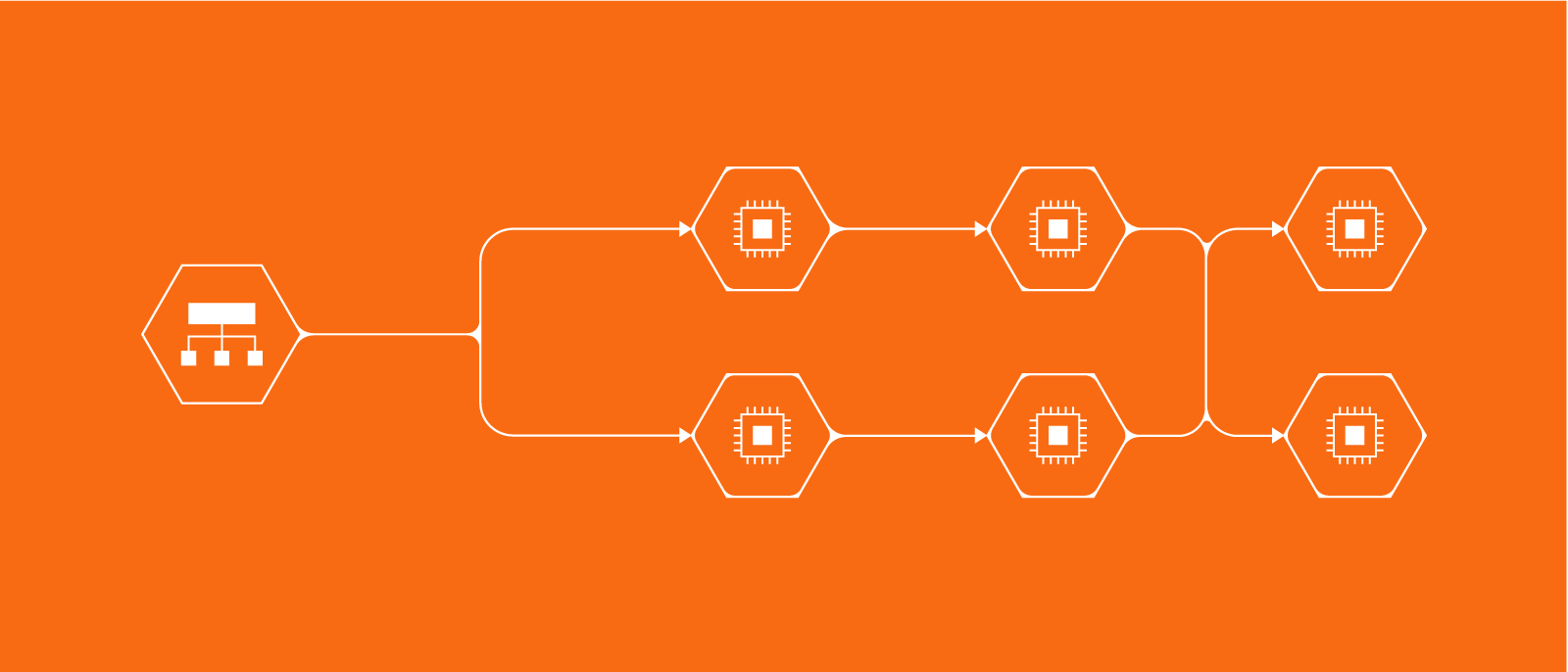Hybrid cloud environments present distinct opportunities and challenges for organizations. As you begin planning your cloud architecture, you’re faced with a choice of private, public, or hybrid options.
By looking at your organization’s cloud architecture needs, you can identify the best cloud strategy and begin taking steps to implement your plan.
Basics of cloud architecture
Cloud architecture includes the software, databases, applications, and other components that allow your organization to take advantage of the cloud and meet your business goals. These components of your cloud computing environment relate to each other through direct and indirect interactions.
Identifying your cloud strategy
Here are a few important considerations when discussing cloud architecture:
- Public cloud: If you already have a public cloud provider such as AWS, Google Cloud, or Azure, you can add a private cloud to adopt a hybrid strategy. One reason for this might be a need for greater security (for the workloads you plan to use the private cloud for).
- Private cloud: If you have a privately owned and managed cloud, you may want to leverage the public cloud to gain added flexibility and reduce your costs.
Often, hybrid cloud strategies are adopted accidentally as IT and various departments sign up for new cloud accounts without conferring with each other. When organizations originally migrated workloads to the cloud, they typically started out with one cloud account and added other accounts and other cloud services over time. This led many organizations indirectly toward hybrid cloud strategies.
Hybrid cloud pros and cons
Pros of a hybrid cloud architecture:
- Get the best of both worlds: Hybrid offers both the security and flexibility you need from your cloud service.
- Secure your data locally: Gain greater flexibility and agility in deployment.
- Optimize your cloud architecture: Hybrid architectures build around your organization’s needs and changing workloads over time.
Cons with a hybrid cloud based architecture:
- Private cloud limitations: Since part of your architecture is private, you have to accept the limitations of private clouds, such as cost, updating hardware, and inflexibility.
- Limited visibility: For many organizations, embracing a hybrid strategy means some reduced visibility of your entire architecture.
Planning your approach
As you plan and decide which approach is right for your organization, here are a few ideas to keep in mind:
- Prepare for complexity: With hybrid cloud you may see increased complexity in your cloud environment. Solutions like Lucidscale makes it easy to automatically visualize different pieces of your cloud environment even from different providers. Just pull in your provider metadata to clearly see your infrastructure.
- Don’t just consider cost: Cost is certainly an important factor for many organizations, but should not be the only consideration. Finding the right strategy to deliver on business objectives should be your primary focus.
- Automate as much as possible: Through automation, you can reduce your use of computing resources and save on your overall computing spend. Take advantage of the powerful automation tools and technologies available to orchestrate containers and manage workloads.
- Embed security: Keep security at the forefront of your strategy planning to help you manage risks.
- Ensure disaster recovery: Although using public cloud providers has many advantages, you’re ultimately responsible for your organization’s disaster recovery planning.
How to set up a hybrid cloud strategy
Orchestration tools help manage the workloads across different clouds making it easier for companies to use a hybrid cloud strategy–although moving workloads is still challenging when you don’t have good visibility. Before you start developing your hybrid cloud strategy, you may want to get more clarity on the cloud technology and toolkits you’ll rely on.
Follow these best practices to begin your building your hybrid cloud:
1. Gather your stakeholders:
Make sure you include everyone on your team whose input is needed. Who needs to help you choose providers, plan workload segments and create a disaster plan? Who else should be involved and in what capacity?
- Plan your team: You should gather input from your organization’s CIO, CTO, cloud architects, database administrators, DevOps team, and anyone else with a role related to the cloud within your organization. Look for the decision makers, end users, and managers.
- Get them involved: Depending on how closely they’ll be working with the cloud, give your team members an opportunity to collaborate. Be sure to provide a means of collaboration and communication. Lucidscale has collaborative tools, for instance, that help teams review and discuss the same diagrams and real-time data together.
2. Plan your workloads:
Decide what instances should be in the public and private clouds. To maintain more control over applications it is best to host these on your private cloud. Within your private cloud, you can more easily adjust your cloud infrastructure to meet your needs. Moreover, you can use specialized tools to help scale and manage your workloads.
- Optimize your cloud use: Take advantage of the options your hybrid strategy provides, including how you balance workloads between the public and private clouds.
- Leverage automation and workload management tools: For instance, you may use Kubernetes to orchestrate containerized workloads.
3. Understand compliance:
Are you bound by any industry-specific cloud compliance standards? Are you meeting or do you need to meet GDPR, SOC II, PCI, or HIPAA? Find out how compliance may impact your hybrid environment. This is a key area of your overall hybrid strategy, since your cloud decisions have a direct impact on how your data is managed and protected.
- Manage your risk of breaches: Avoid leaving breach risk to chance.
- Follow data best practices: Type of user, customer, or other personal data should be established and followed consistently.
- Recognize your responsibility: Don’t leave compliance up to your vendor. Your organization is ultimately responsible for your own compliance.
- Plan data storage strategies: Use physical and database separations to protect your data.
- Choose a compliance champion: Designate a team member to maintain your compliance program.
- Use access controls: Avoid sharing logins and train your team on how to protect credentials.
4. Research providers:
Consider price, storage options, different security and compliance strategies as well as your organizations specific workloads and business needs.
- Amazon Web Services (AWS): AWS has a well-established catalogue of services and offers the largest cloud infrastructure.
- Microsoft Azure: Another popular choice, Azure is secure and scalable. An emphasis on enterprise needs and interoperability make Azure particularly useful for larger organizations.
- Google Cloud: A strong range of services and no required commitment make Google Cloud a good fit for many organizations. Startups may appreciate the service flexibility.
5. Consider your budget:
The software and hardware investments you need require thoughtful consideration and planning. If you plan your budgeting, your new hybrid cloud architecture can save your organization money in the long run.
- Understand the cost structure: Find out how your cloud vendor’s costs are calculated.
- Consider the financial benefits: The cloud has many benefits, including the ability to manage computing resources more efficiently. Consider how this influences your budget.
- Visualize current and future use: With the right visualization of your cloud usage, you can plan how your cloud service can scale along with your applications.
- Update your architecture diagrams: Keep your diagrams up to date. You should also use diagraming to map out your processes.
- Manage your services usage: By strategically managing how you use your cloud services, you can control your cloud budget.
6. Preparing for downtime:
Typically, downtime costs as much as $300k per hour or potentially even more. Considering the costs incurred during downtime incidents, it makes sense to manage and mitigate your downtime risks.
- Compare your cloud architecture: Visualizing your cloud architecture and comparing your current state with a blueprint allows you to identify discrepancies.
- Make preventative corrections: Maintaining your architecture to proactively keep it in line with your application’s needs can help you prevent downtime before it happens.
- Gain visibility: With Lucidscale, you can bring third party metadata into your diagrams and visualize problems with your cloud.
7. Plan how you’ll scale:
In all likelihood, your cloud enterprise architecture needs are going to change. Building a plan for future scaling is important.
- Review your processes: Make sure your business and IT processes are aligned with your cloud architecture as you scale.
- Incorporate workflow automation: With automation tools and processes, you can scale your workloads and adapt how you use the cloud.
- Plan migrations: If necessary, you can migrate in the future from one cloud to another if your needs significantly change.
8. Get cloud visibility:
Throughout the process of setting up your cloud architecture and managing your cloud operations, having greater visibility ensures that your team is on the same page and knows exactly what is happening in the cloud.
- Incorporate real-time data: Instantly bring real-time data from your cloud into Lucidscale for an accurate overview or review your cloud’s details.
- Drill-down to relevant areas: Filter information to find the most relevant data in your cloud architecture.
- Manage internal compliance: Run a quick review of your cloud governance data and ensure that you’re on-target with internal best practices.
Plan your cloud enterprise architecture
Upfront strategic thinking reduces your computing costs, helps you achieve better return on investment, and ultimately improve your results. A hybrid cloud offers advantages for your organization and can be a sensible choice.

Stand above the rest with your cloud environment. Check out our best practices for managing a hybrid cloud environment.
Let’s goAbout Lucidchart
Lucidchart, a cloud-based intelligent diagramming application, is a core component of Lucid Software's Visual Collaboration Suite. This intuitive, cloud-based solution empowers teams to collaborate in real-time to build flowcharts, mockups, UML diagrams, customer journey maps, and more. Lucidchart propels teams forward to build the future faster. Lucid is proud to serve top businesses around the world, including customers such as Google, GE, and NBC Universal, and 99% of the Fortune 500. Lucid partners with industry leaders, including Google, Atlassian, and Microsoft. Since its founding, Lucid has received numerous awards for its products, business, and workplace culture. For more information, visit lucidchart.com.

